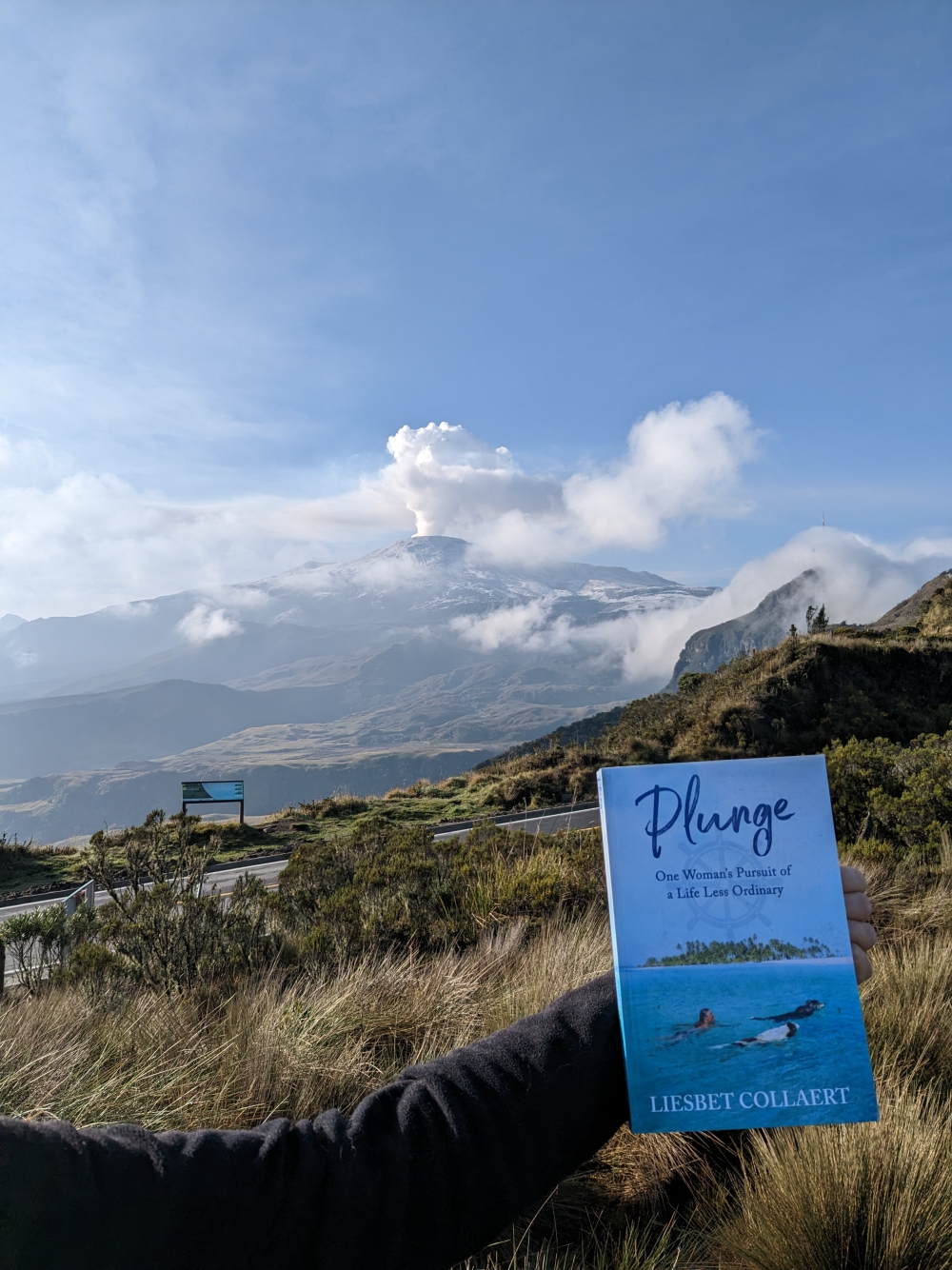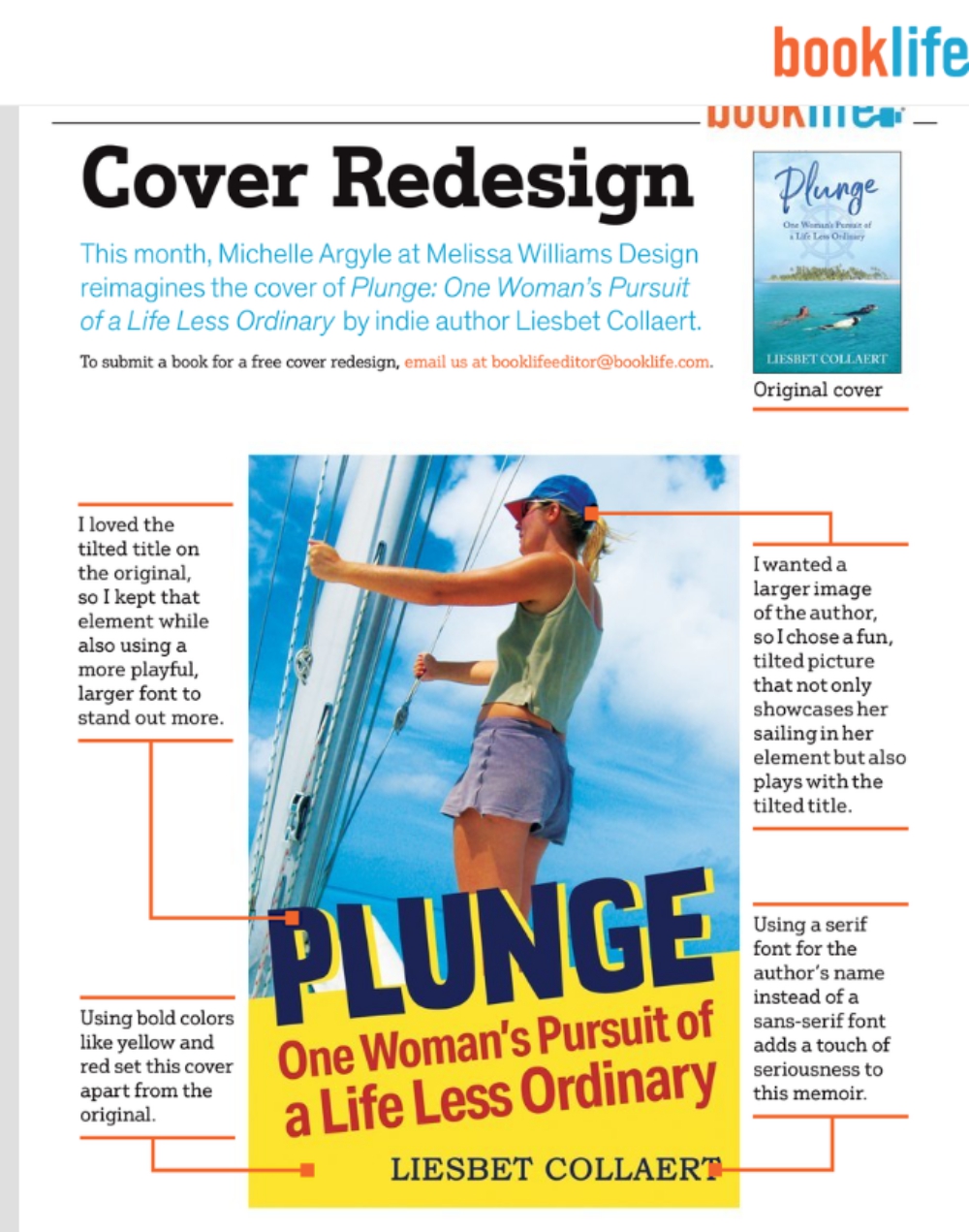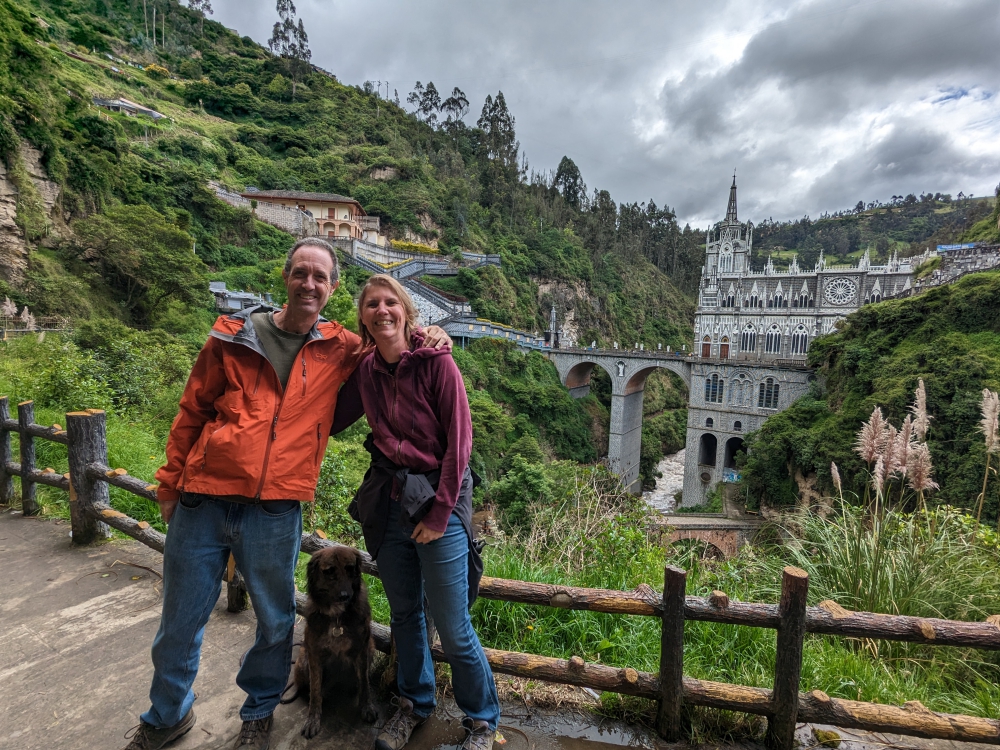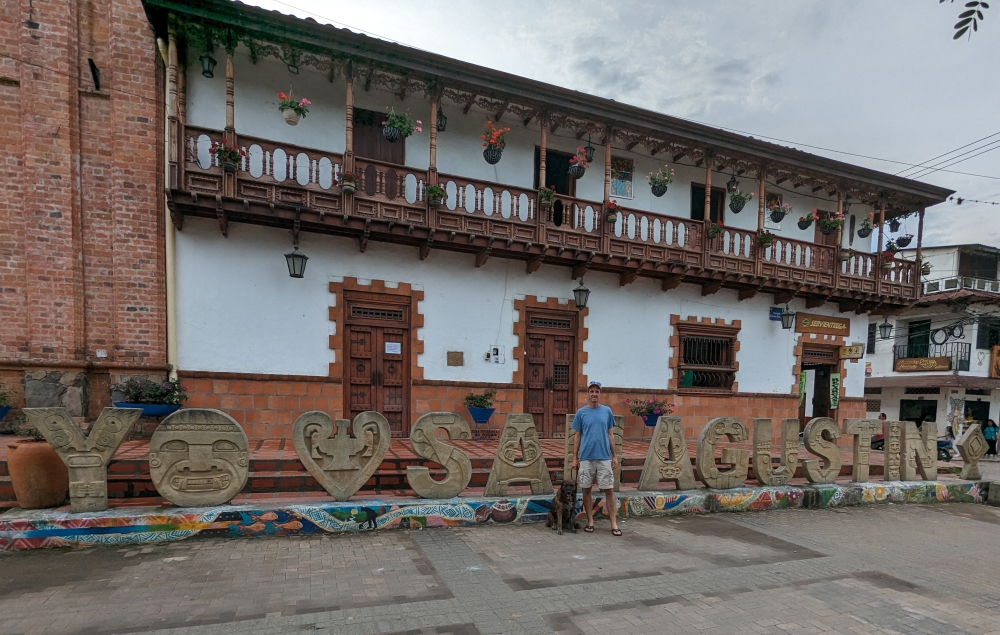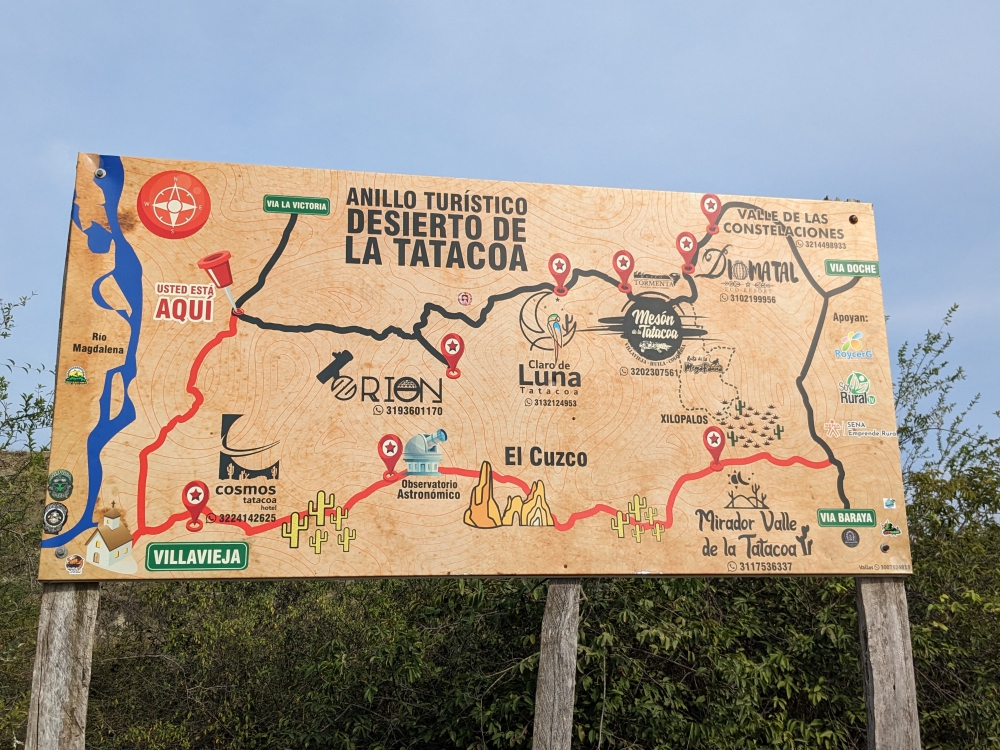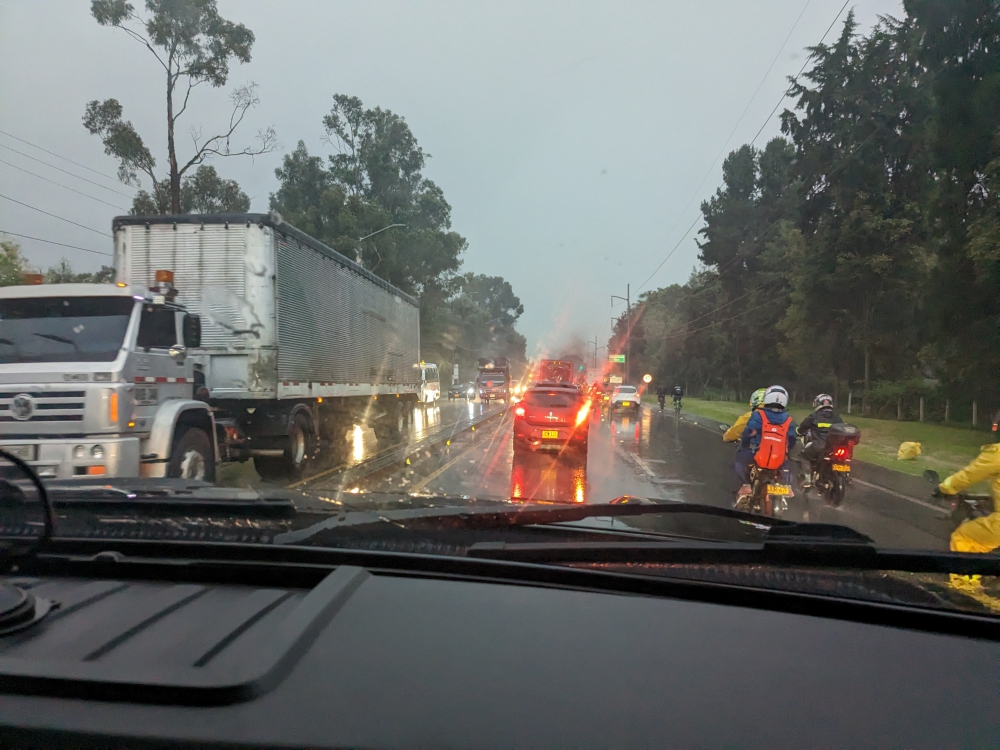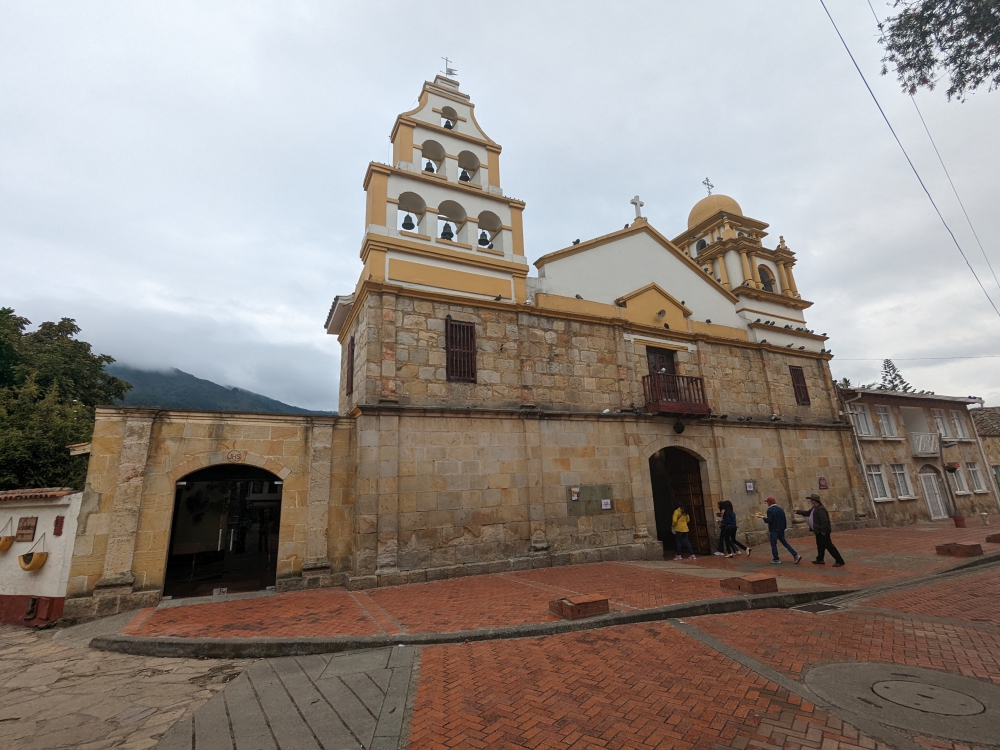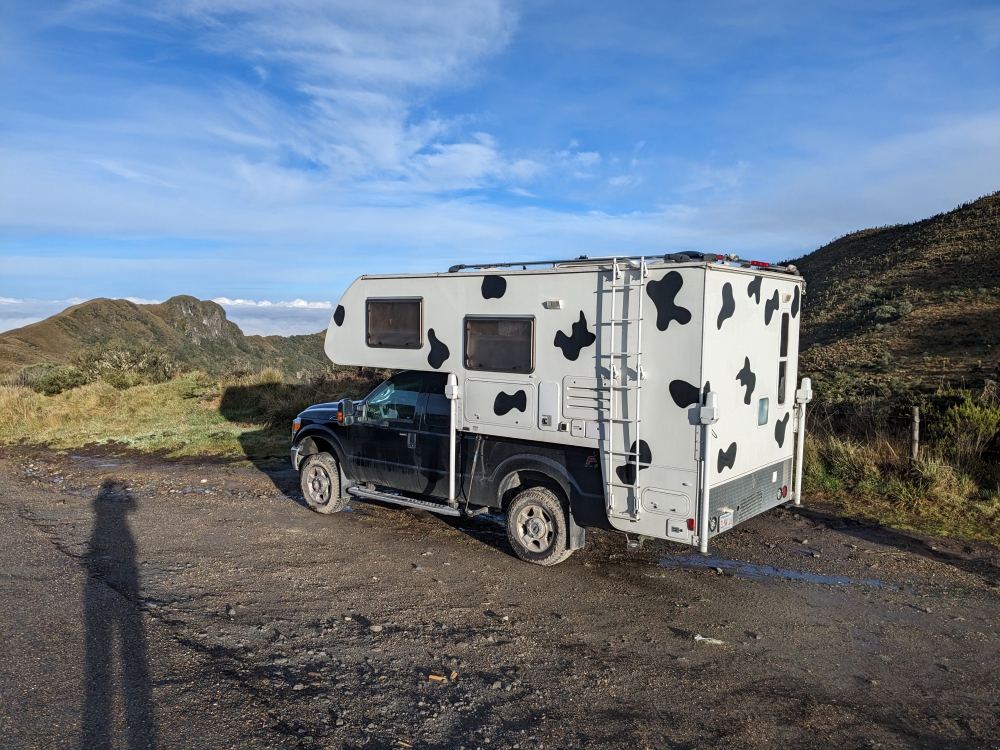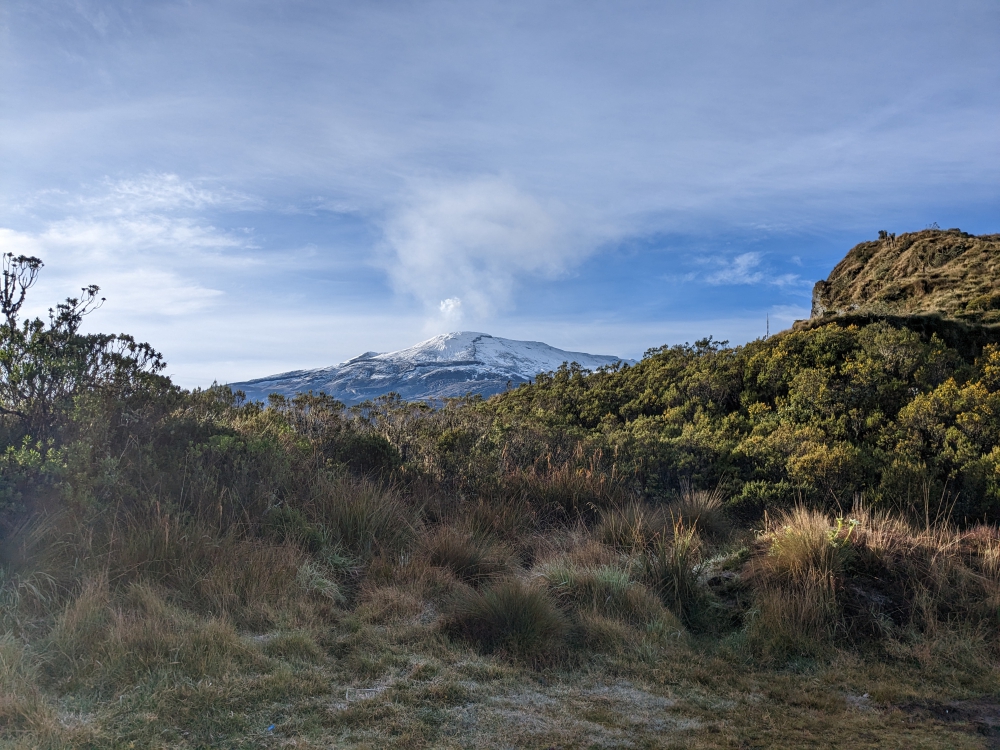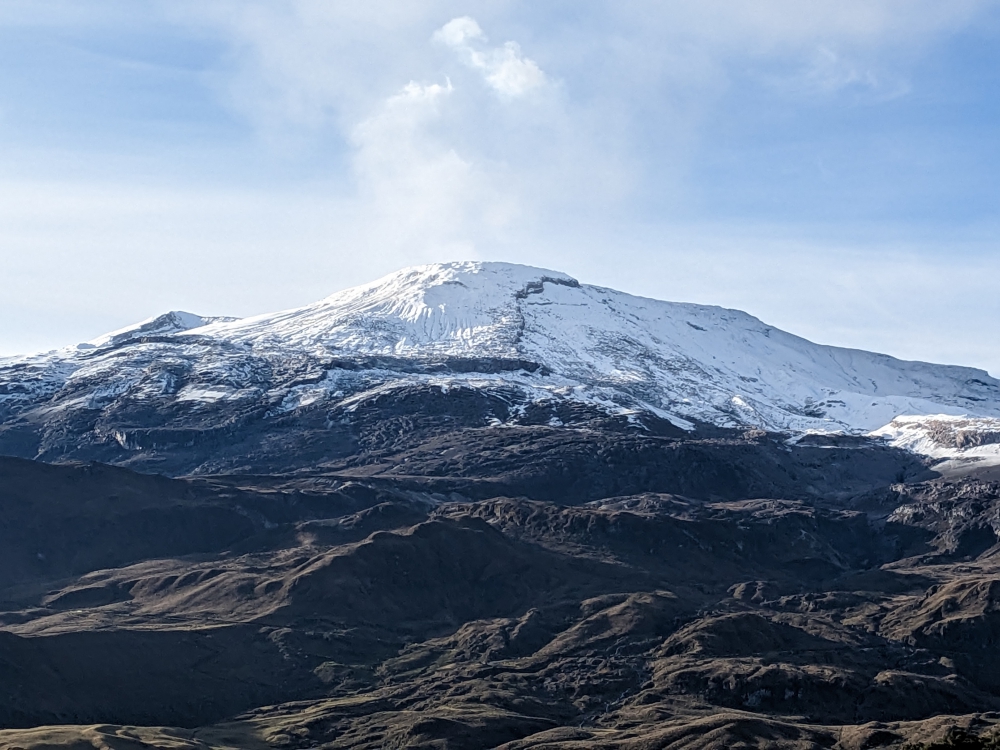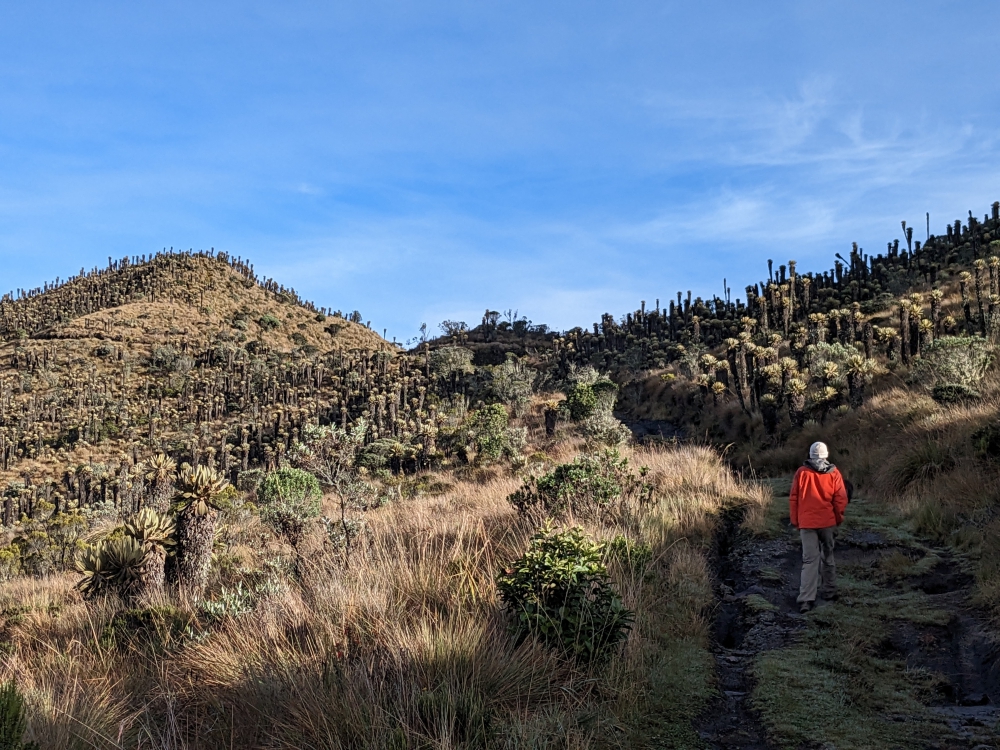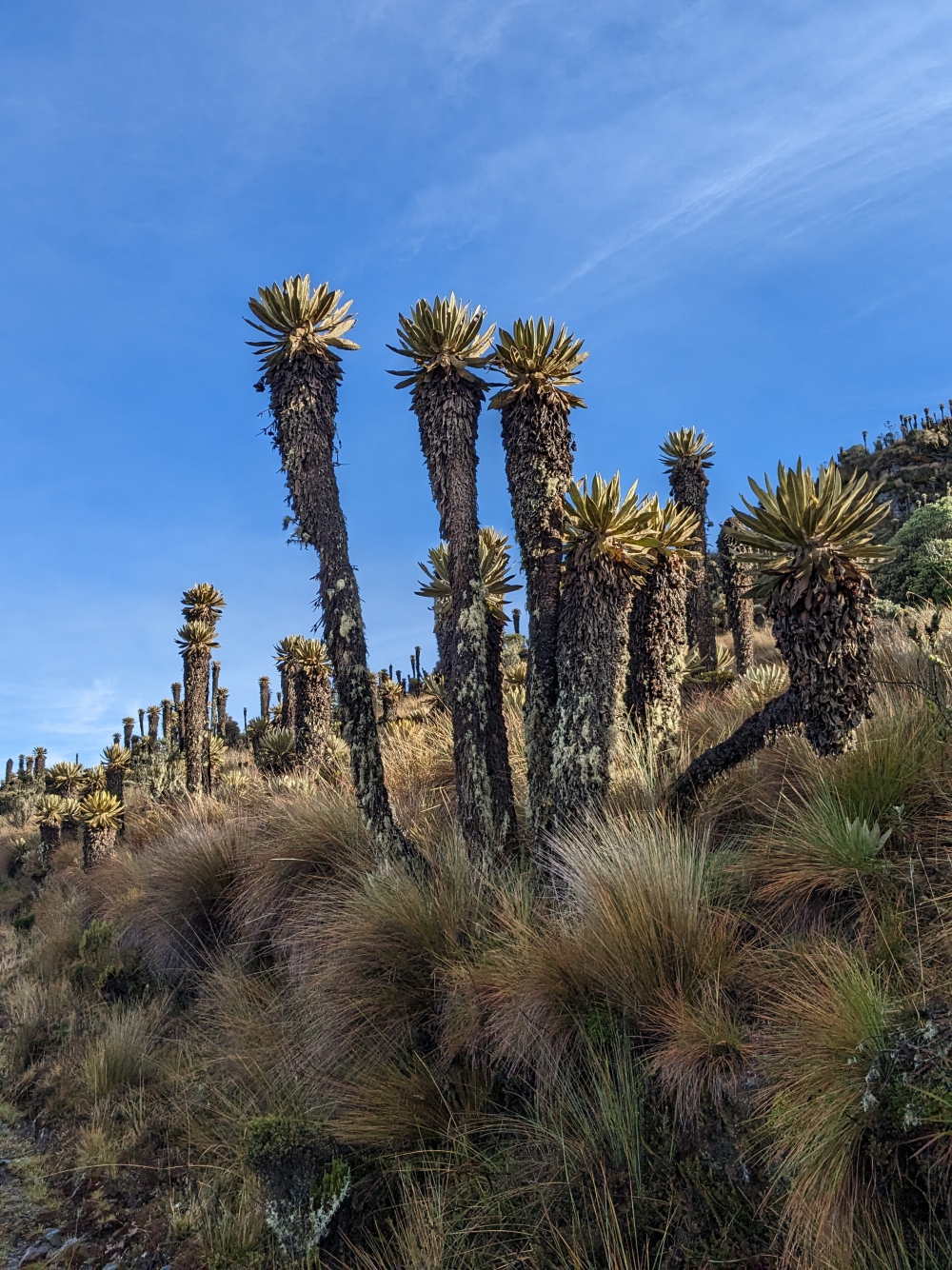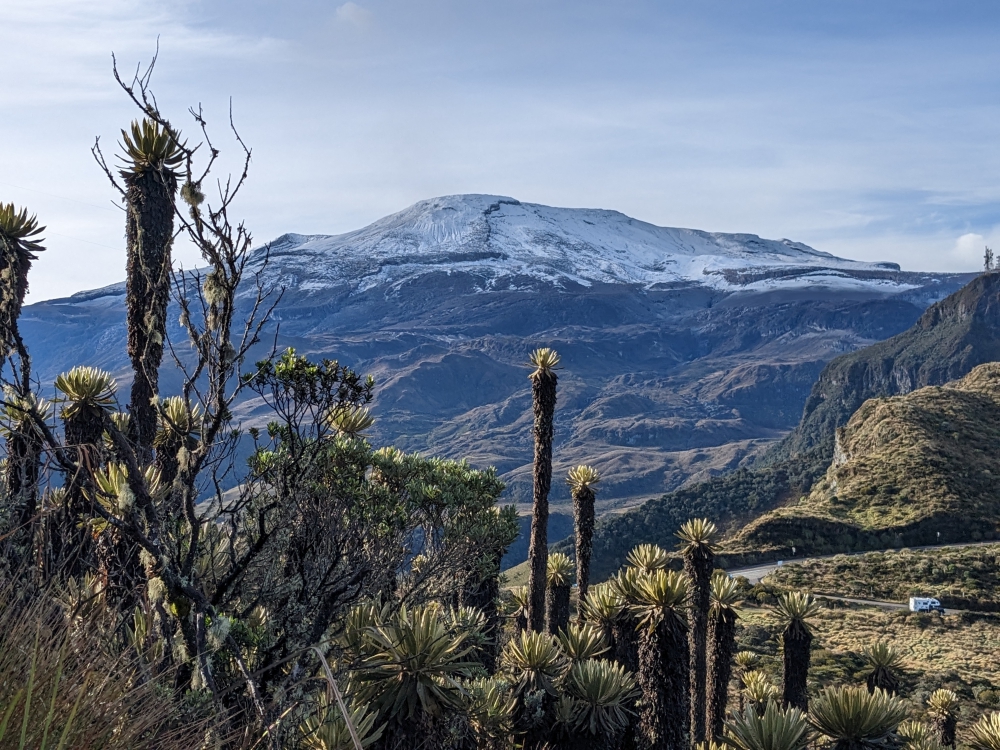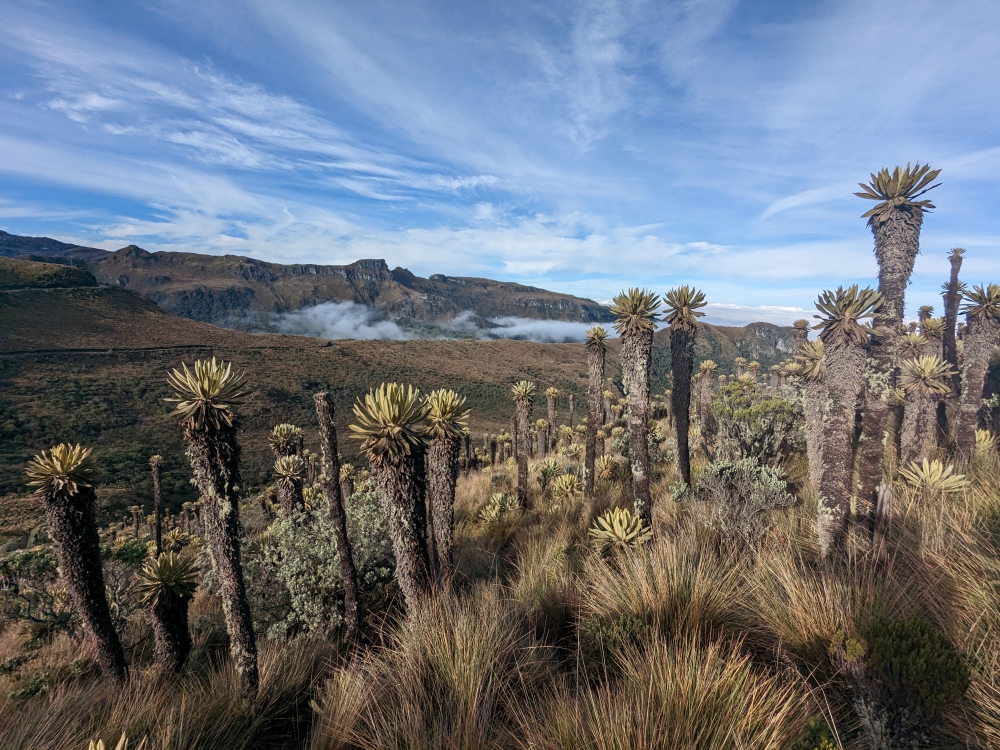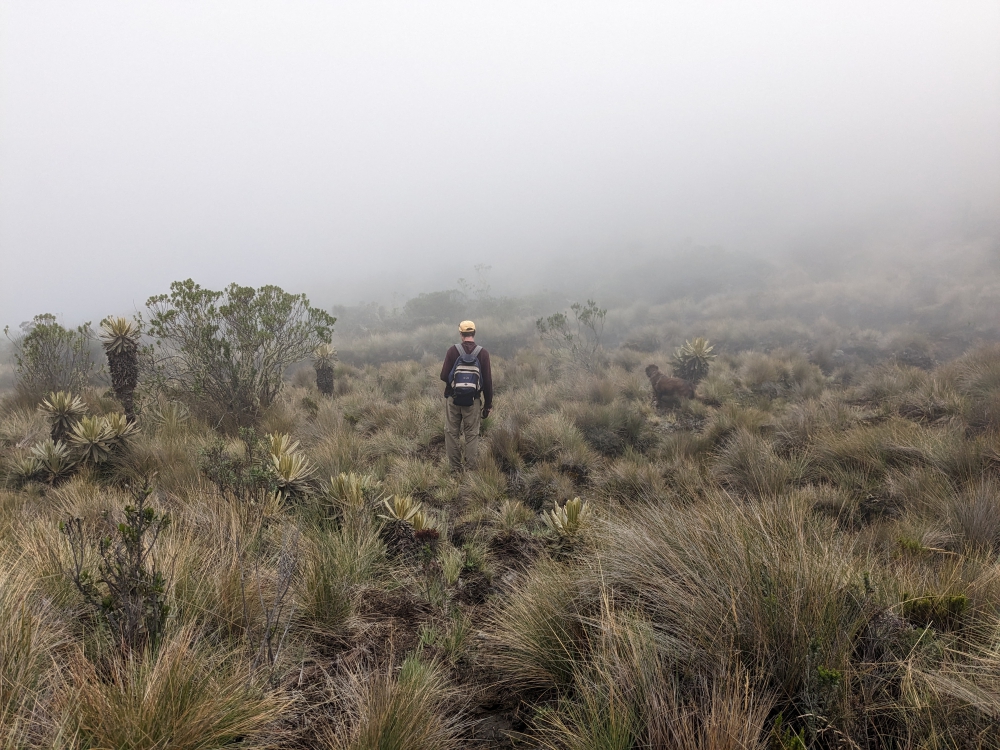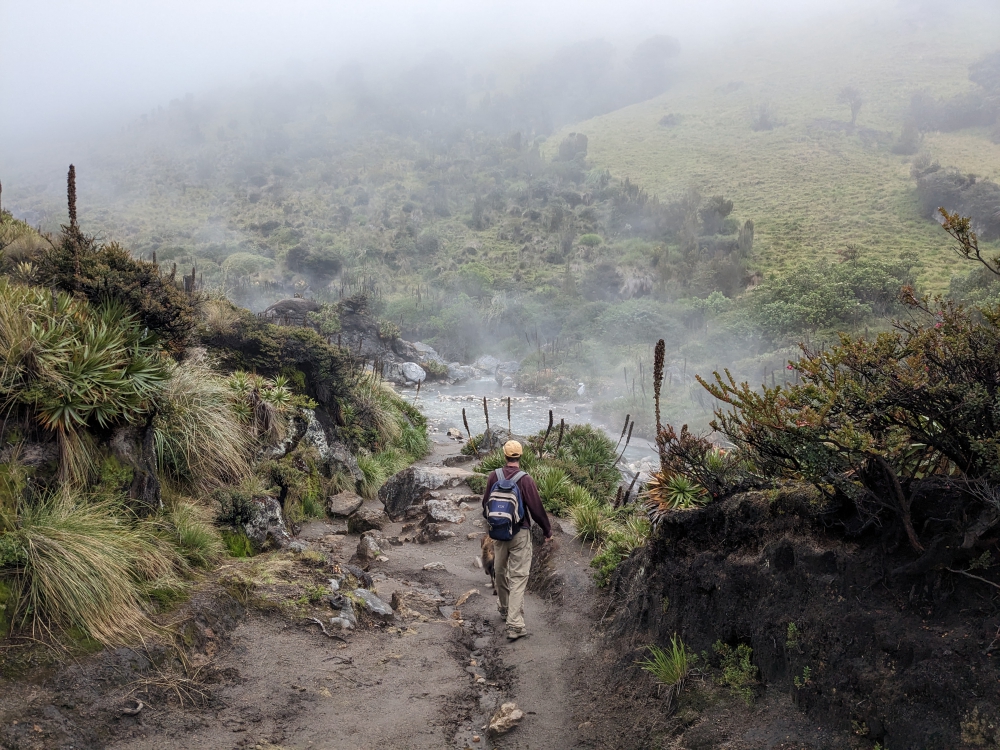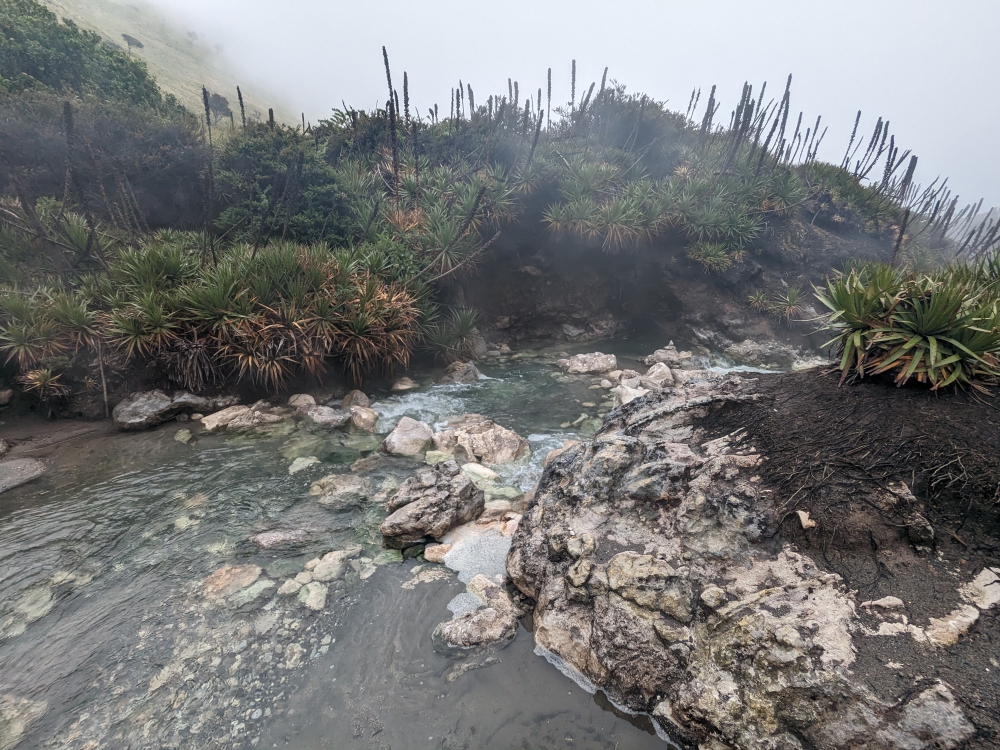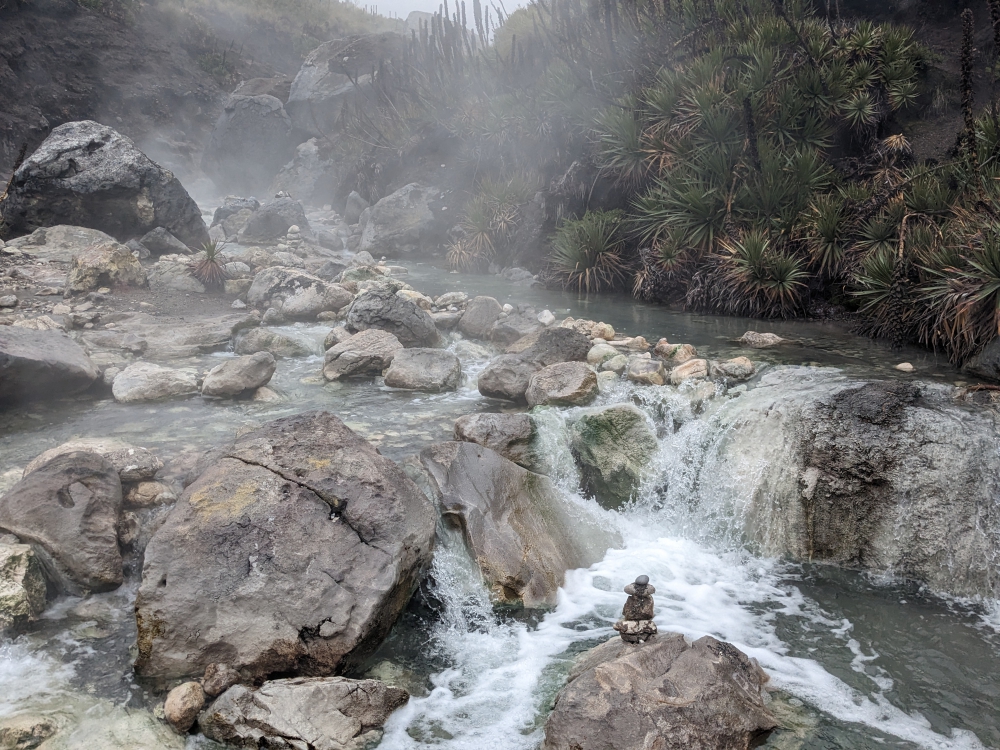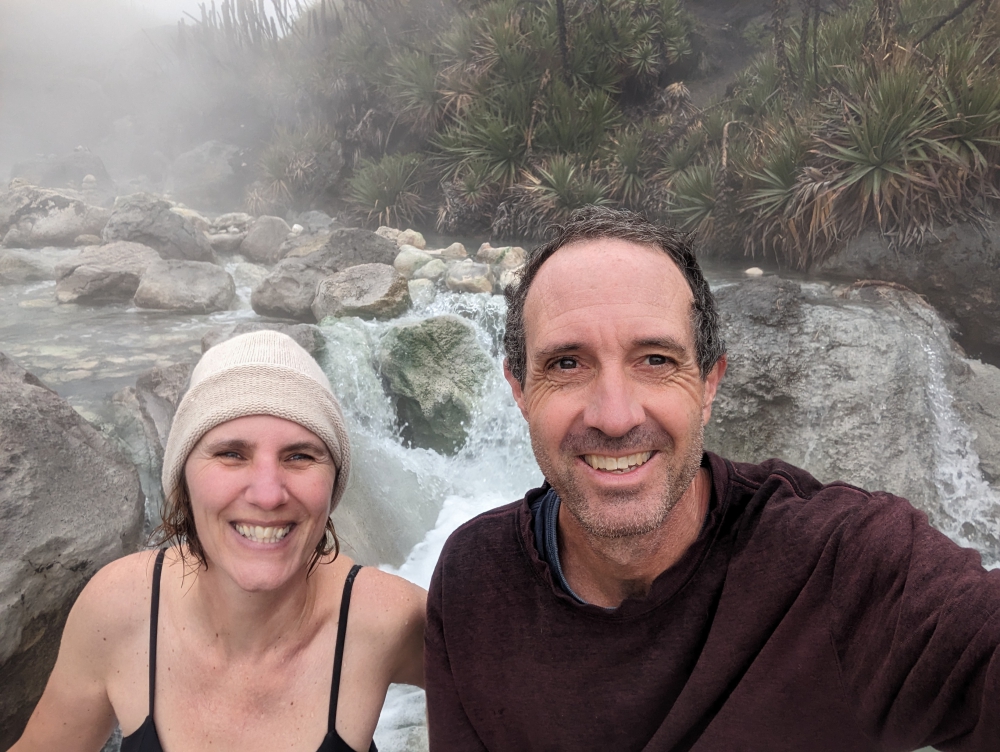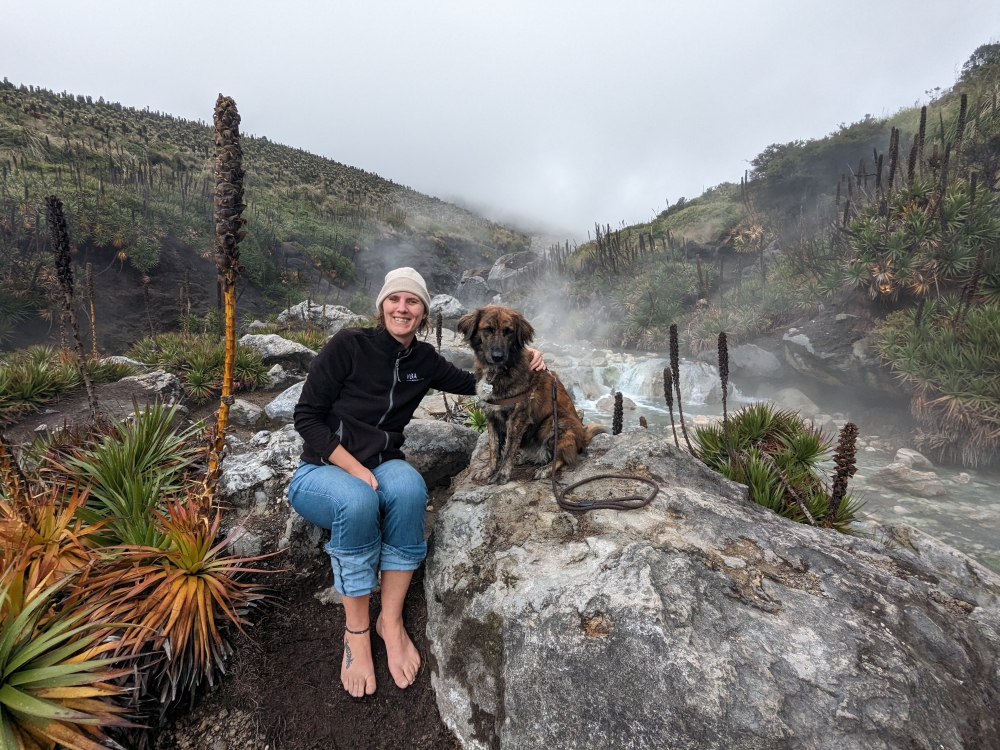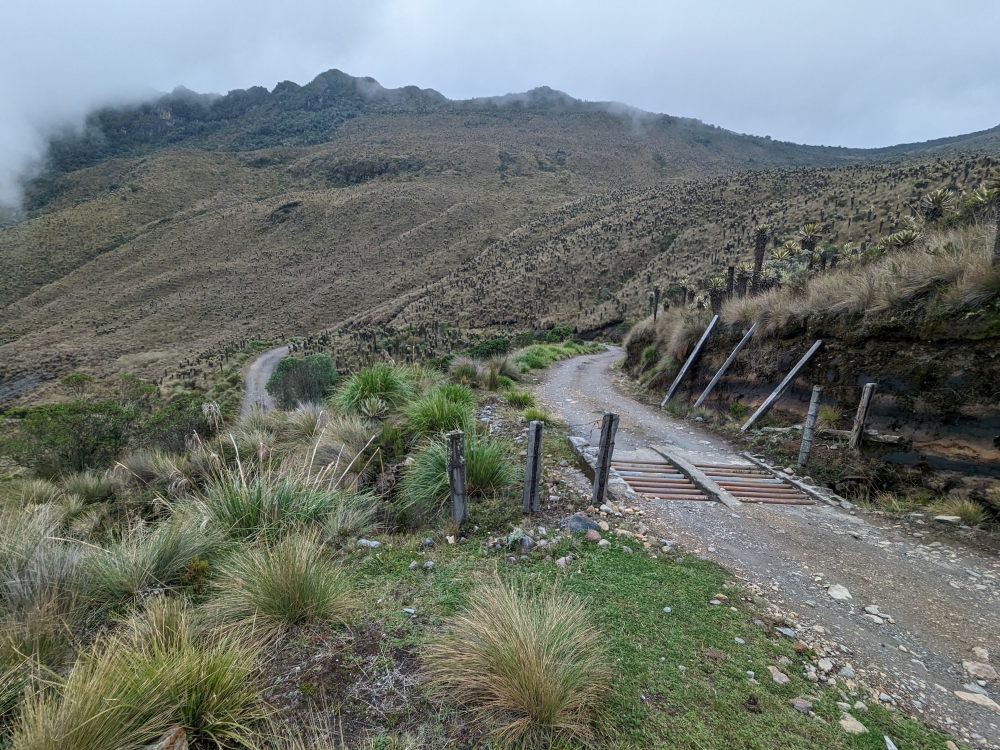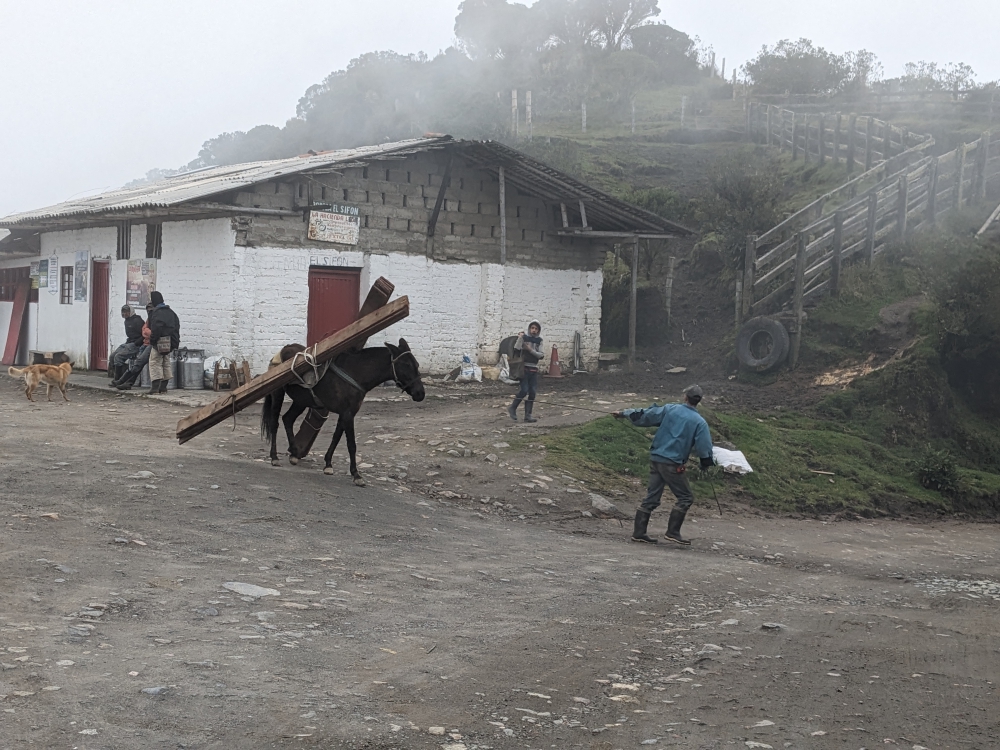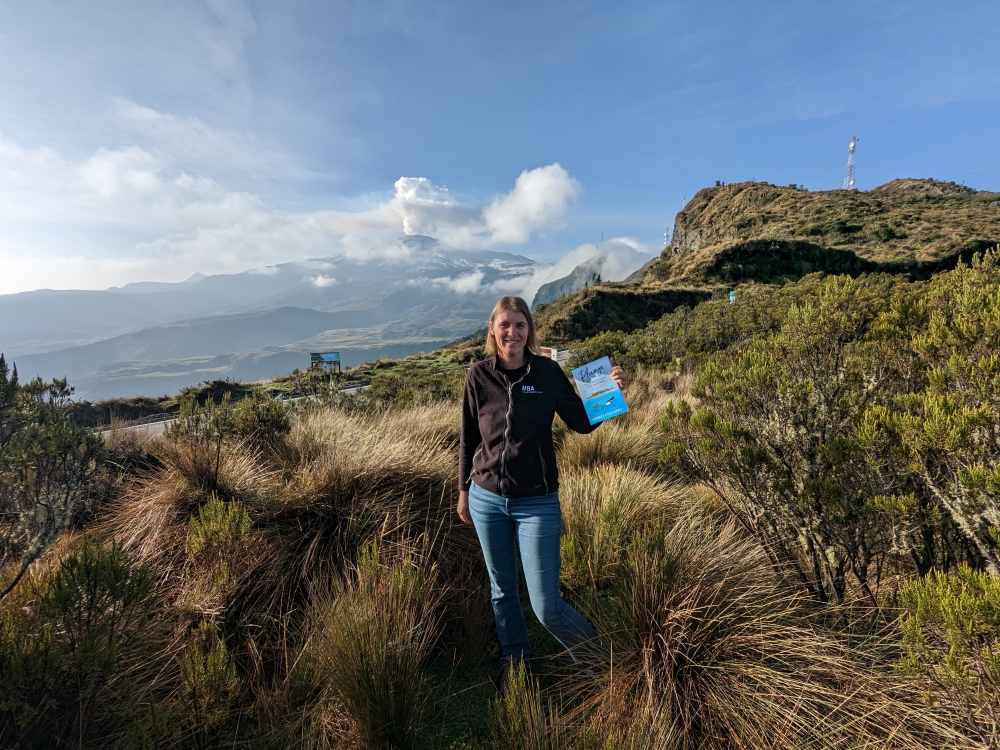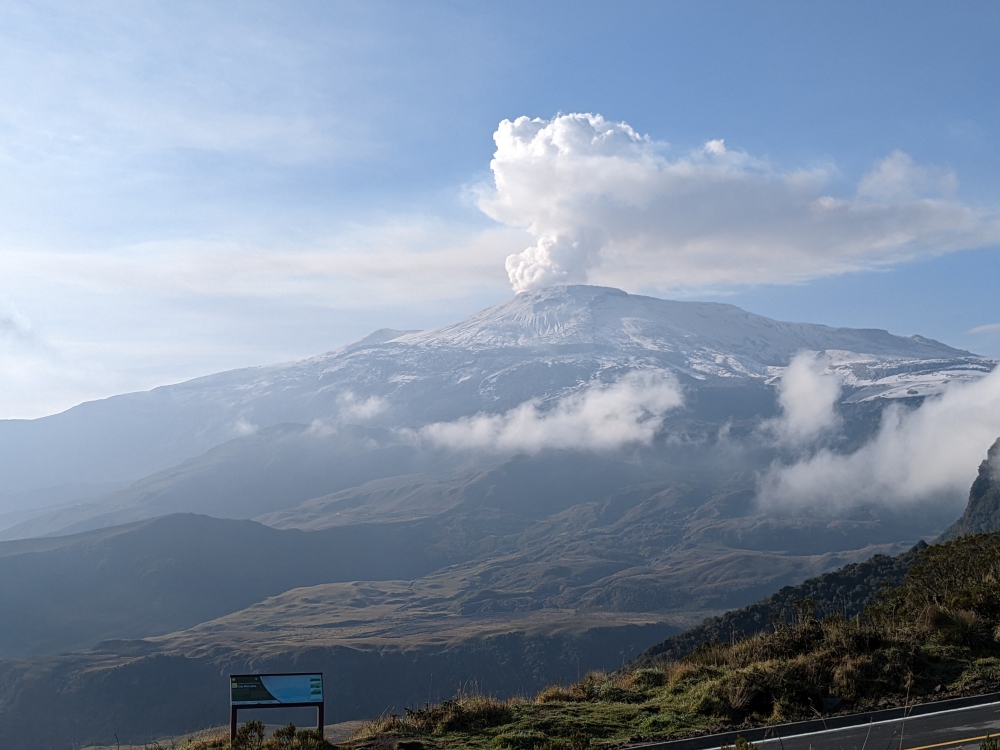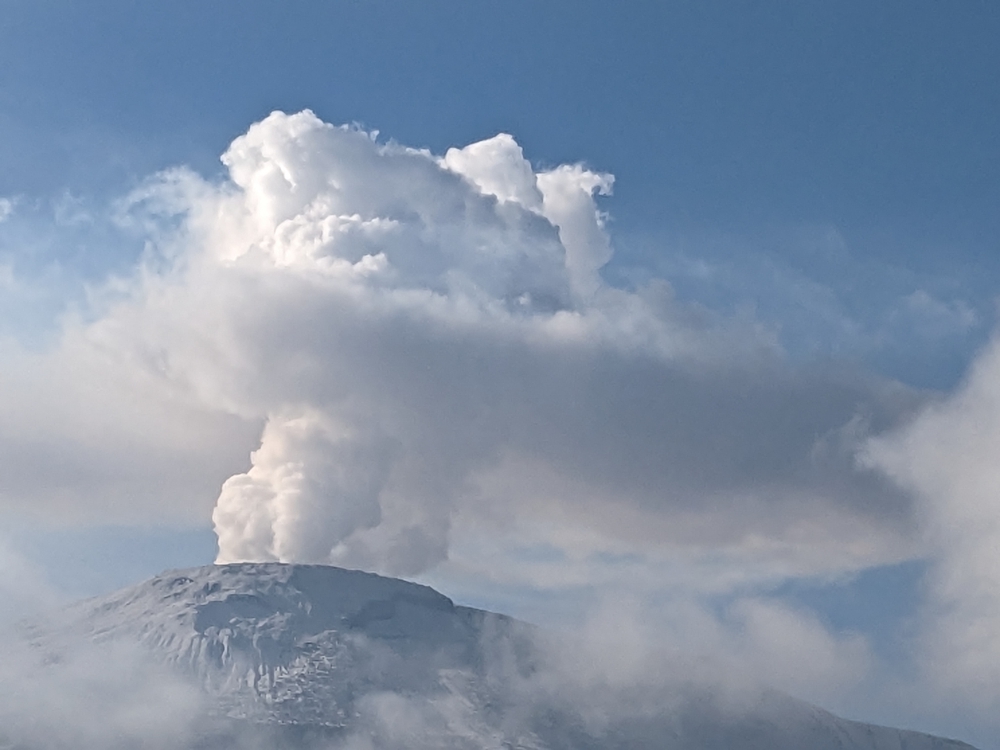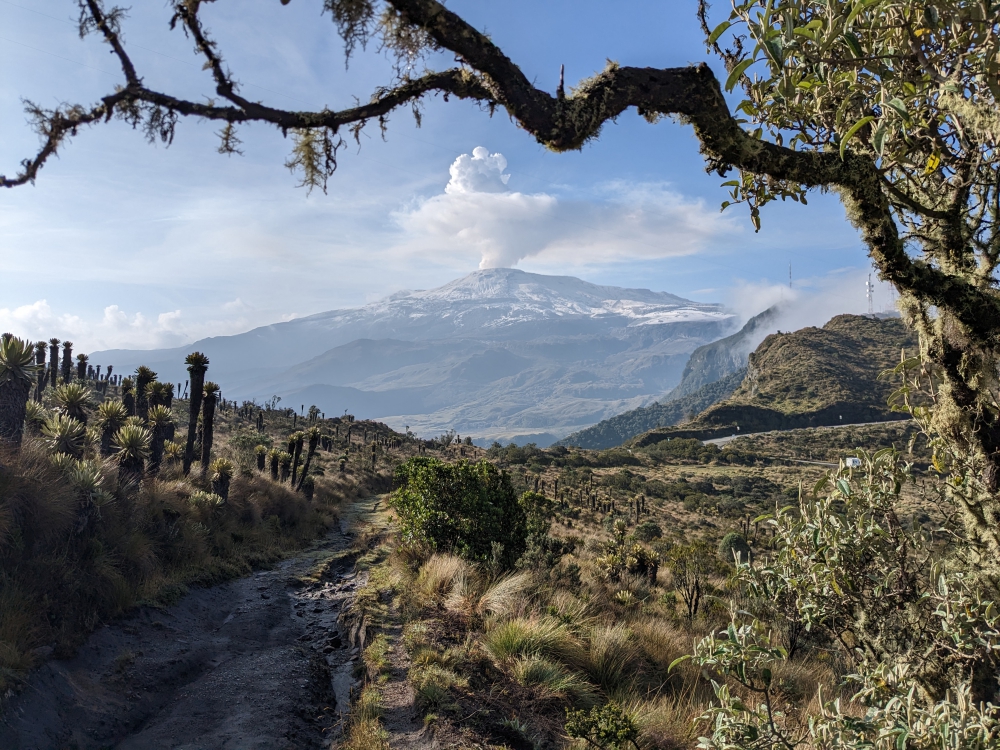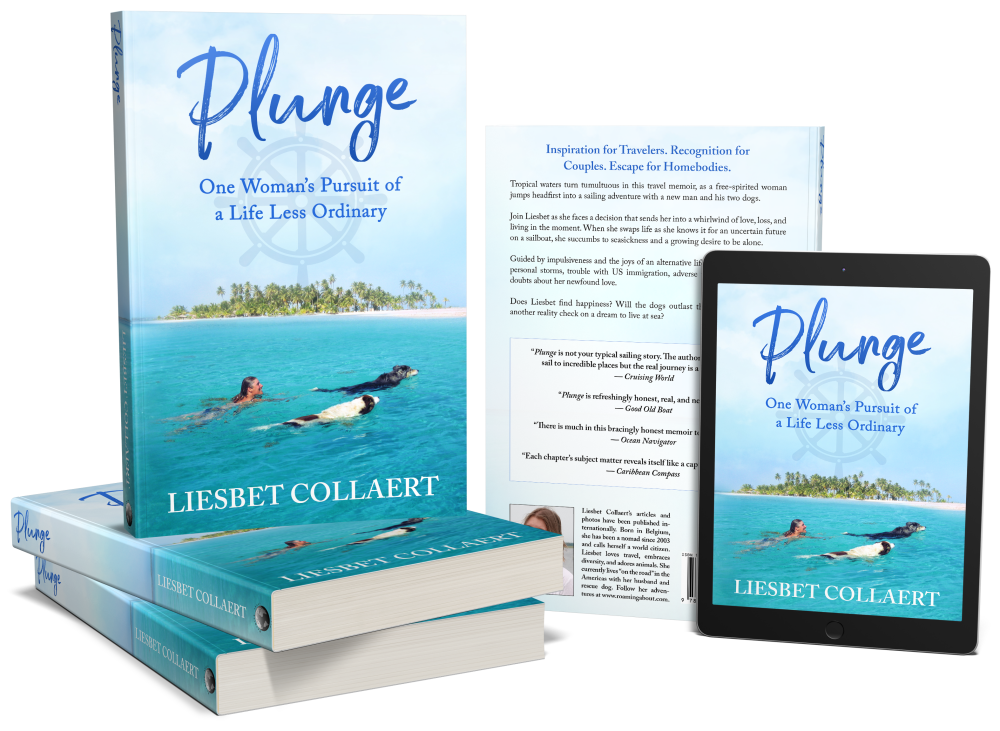
Every month, I post a report of our expenses to show that it is possible to live a comfortable, exciting, and adventurous life without breaking the bank. The less money you spend, the less you need to make. 🙂
This report includes ALL of our expenses, in US$, for two adults and one 60-pound dog (we adopted Maya on June 4th, 2019). Under groceries we incorporate food, produce, and non-alcoholic drinks predominantly bought in supermarkets. Toiletries belong in that category as well. Dining out means eating at a restaurant/event or purchasing take-out food. The health category covers non-prescription medicines and vitamins/supplements; medical contains prescription drugs and doctor’s visits. Because of our income level, Mark and I are eligible for free health care within the state of Massachusetts. For check-ups and extensive care, we return to the US East Coast.
Early last month, Mark, Maya, and I completed 175 days of exploring Colombia and on May 4th, we crossed into Ecuador with our truck camper Thirsty Bella. Did you know that the national currency in this country is the US dollar? It will make our tracking – and spending – that much easier. 🙂
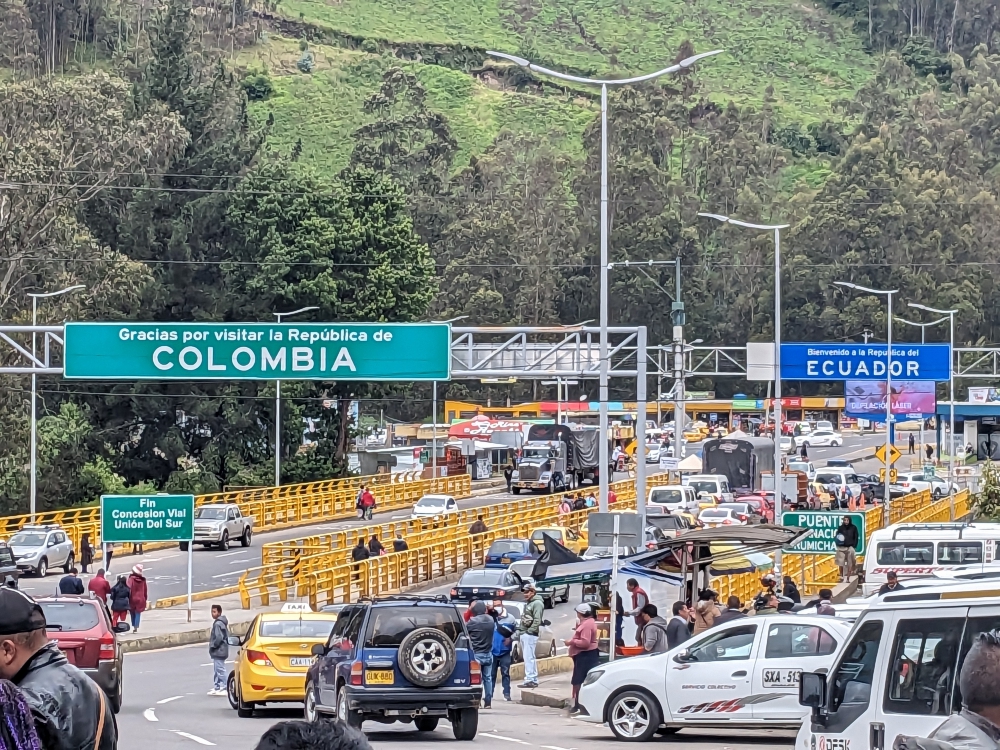
The border crossing between Colombia and Ecuador was surprisingly mellow.
May 2023 was our cheapest month in years. We rarely dip under $1,000, but this time we surpassed ourselves. The reasons: because April was an expensive, above-average month, Mark and I tried hard to “save” money by not eating out and camping for free, and we had somewhat stocked up on dry food in cheaper Colombia. On top of that, we were surrounded by generous friends – old and new.
(As always, click on or hover over photos in galleries to read their captions.)

Graham treated us to a traditional Sunday lunch out in Zuleta

Fernando made a Mexican lunch for all of us

Spectacular dinner out with Katherine and Brandon in Quito
Yes, Ecuador has higher prices for pretty much everything except tolls, gasoline, and produce and you often have to pay for street parking, hiking, and natural sites. National parks seem to be free.

One of the many free national parks in Ecuador

A lovely park!

Peguche waterfall ($1 for two people)
The main roads, especially the PanAmerican Highway, are in better shape, motorcycles are less frequent, and tourism is more established than in Colombia.

Vegetable market in Otavalo

Vegetable bounty for $5

Sampling of our fridge

In Ecuador, homemade potato chips come with three condiments…

Big jar of honey: $6
Our highest category last month was groceries at under $200, followed by car expenses. We didn’t drive that much and only ventured around northern Ecuador the first five weeks, because Mark decided to leave from Quito for his annual medical and family visit to Massachusetts, USA.
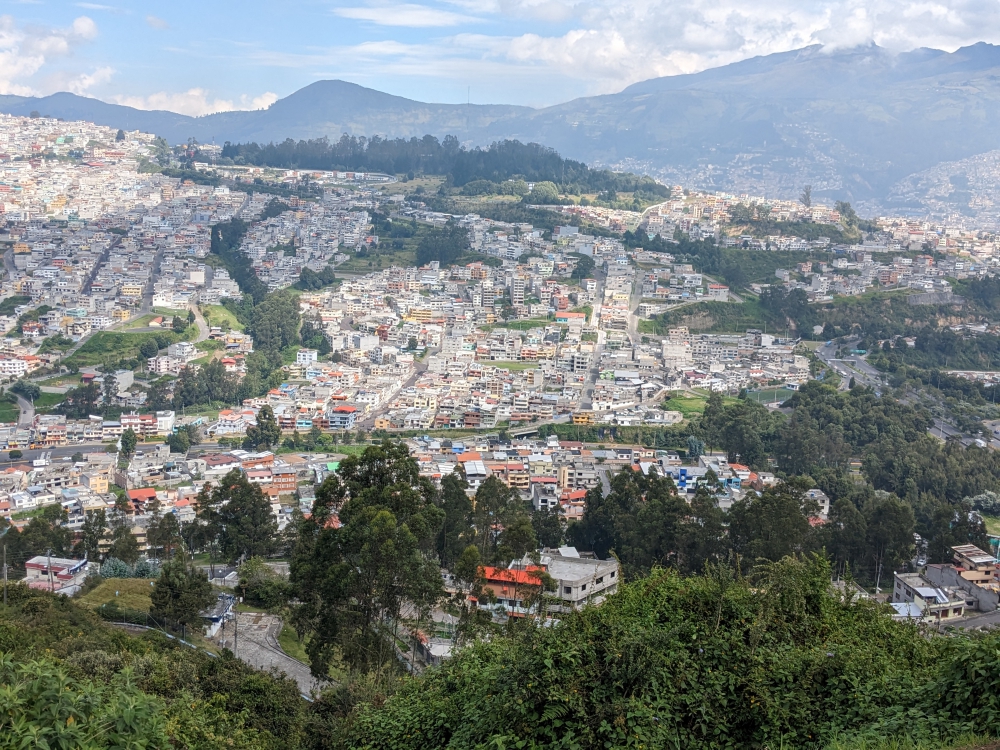
View over Quito from Andy’s place, where we stored our camper for two nights ($8) while visiting the capital with friends
Before we crossed the border with Ecuador, we had an oil change done in Pasto. When you buy the oil at a garage, they perform the change for free. Unfortunately, the mechanic overfilled the reservoir, so Mark had to carefully drain some of it back out (and save it) the following day. There were some tolls too.

The shop part of the garage

Getting ready for our oil change in Pasto

If the mechanic could have, he would have poured two gallons of oil in the reservoir!

Tolls in Colombia are pricey, all things considered.

Our last toll road in Colombia
The last two nights of May, the three of us stayed at a funky Airbnb in Quito. This allowed us to explore the capital city on foot – our accommodation was located in the historical district – and to have quality time with our friends Katherine and Brandon, who are traversing Central and South America on their decked-out BMW motorcycles. We had an amazing time!

Our Airbnb in Quito consisted of an entire house and former hotel, El Palomar

Our bedroom, one of six

View from the top floor of our Airbnb
As usual, we boondocked (camp without facilities) 100% of the time and managed to mostly do so for free. Ecuador offers more public spaces than Colombia, but we did have to pay a small fee for overnight parking a few times.

Overnight parking spot in busy Pasto

Our first (free) camping spot in Ecuador was peaceful, so we stayed a week!

Camped for one night (free) at Grutas de La Paz

Free camping at Chachimbiro hot springs

Free camping near Laguna de Cuicocha

How’s this for a free campsite view?

Camped by the El Pisque hot springs (free)

Camped for one night (free) by the Pena Pivico rock climbing wall

Parked for the night (free) outside of the Jamanco hot springs in Papallacta
The reason we spent some money on camping is because I wanted to check out a few safe options for Maya and me to stay during Mark’s 2.5-week absence. In the end, I decided to return to the property of friends Graham and Amalia in Ibarra, where I’m currently typing this. Mark left on June 11th.

Mark, Maya, and I stayed here, with Graham, wife Amalia, daughter Leah, and grandma Ada for five nights and were invited back. This is my current location.

Lots of doggies at Graham’s place in Ibarra

Beautiful property at Graham’s

Night view from Graham’s place

Camped for one night at Cascada de Peguche in Otavalo ($1)

Checking out The Garden campground in Ibarra ($6 per person per night) – too noisy

We were camped for one night just outside the Oyacatchi hot springs ($1 for parking)

Checking out Fernando and Evelyn’s place in Puembo to potentially stay when Mark left. I really liked it here as well.
Despite trying our best to not eat out (cooking and doing dishes every single day does get old, though), we kept sightseeing without worrying too much about the cost. In Colombia, we paid $9 for the cable car (teleférico) from Santuario de Las Lajas back up to the parking lot.

Goofy photo at Las Lajas

Taking the cable car back up the hill to Thirsty Bella

We are being followed!
In Ecuador, we soaked in four (!) hot springs (termales) for $42 in total, paid $5 for road access into Cayambe-Coca National Park, and visited the solar clock and museum ($5) on the equator. The following photos are just a sampling, blog posts about all these attractions will follow later this month.

Hot springs at Grutas de La Paz ($2/per person)

Grutas de La Paz; an inspirational site

The Chachimbiro hot springs were fancy at $7/person

Nice pools to soak in at the Chachimbiro hot springs, my favorite ones.

Crossing the equator in Ecuador ($5/per person to visit the solar clock & museum)

The equator museum wants to change the orientation of globes and maps.

We didn’t visit the El Pisque hot springs and this is why…

Oyacatchi hot springs

Maya wanted to be part of the fun.

For $5 (“road tax”) you are allowed access into the Cayambe-Coca National Park, but only from the north.

Jamanco hot springs
We have been hanging out with friends in May so needed to make sure we had wine, beer, and rum. Also, before crossing into Ecuador, we topped up our propane tank as this is cheaper and more convenient in Colombia. The rest of the utilities category went to internet. Claro is the biggest cell and data provider here as well, but the plans are pricier than north of the border. Somehow, we still manage to spend around $30 a month, which is alright. The price is roughly $1 per 1GB of data.

Mark’s new alpaca sweater

Lots of clothes to choose from

Our new blanket is tested and approved by Maya at the Airbnb
The indigenous town of Otavalo reputedly has the biggest handicraft market in South America on Saturdays. Our trio visited on Sunday – we are not fans of crowded places – and Mark bought two pretty sweaters, one synthetic and one made of alpaca wool, for $32. At an artisanal market in Quito we finally bought an alpaca blanket for our bed after using a crappy fleece one from Walmart for six years. It was a tough bargain at $23.

Of course, I have to try “everything,” including forcha…

I did not like it!

A sad day – Mark finished the maple syrup we’d brought from the US

Homecooked hamburger with roasted potatoes

Another tasty and varied dinner at home

My treat in Otavalo: a fruit cocktail with ice cream, whipped cream, and a wafer for $1!
Our drinking and dining out expenses were ridiculously low. We thought there would be a spike during our time with friends in Quito, but they were super generous to treat us to a fancy dinner the first night, and on the second night we cooked and ate in the house we rented. If there would be a bakery category, however, you’d be surprised at how costly it gets.

Being served at the Oyacatchi bakery by a young girl

I found some good pastries in Quito and surroundings

Amazing steak dinner for our friends

Lovely evening out with friends in Quito – and the food and views were delicious
And that’s a wrap for May 2023, totaling $652. I doubt we will ever be able to match that amount, but we might as well try. Once in a while…
